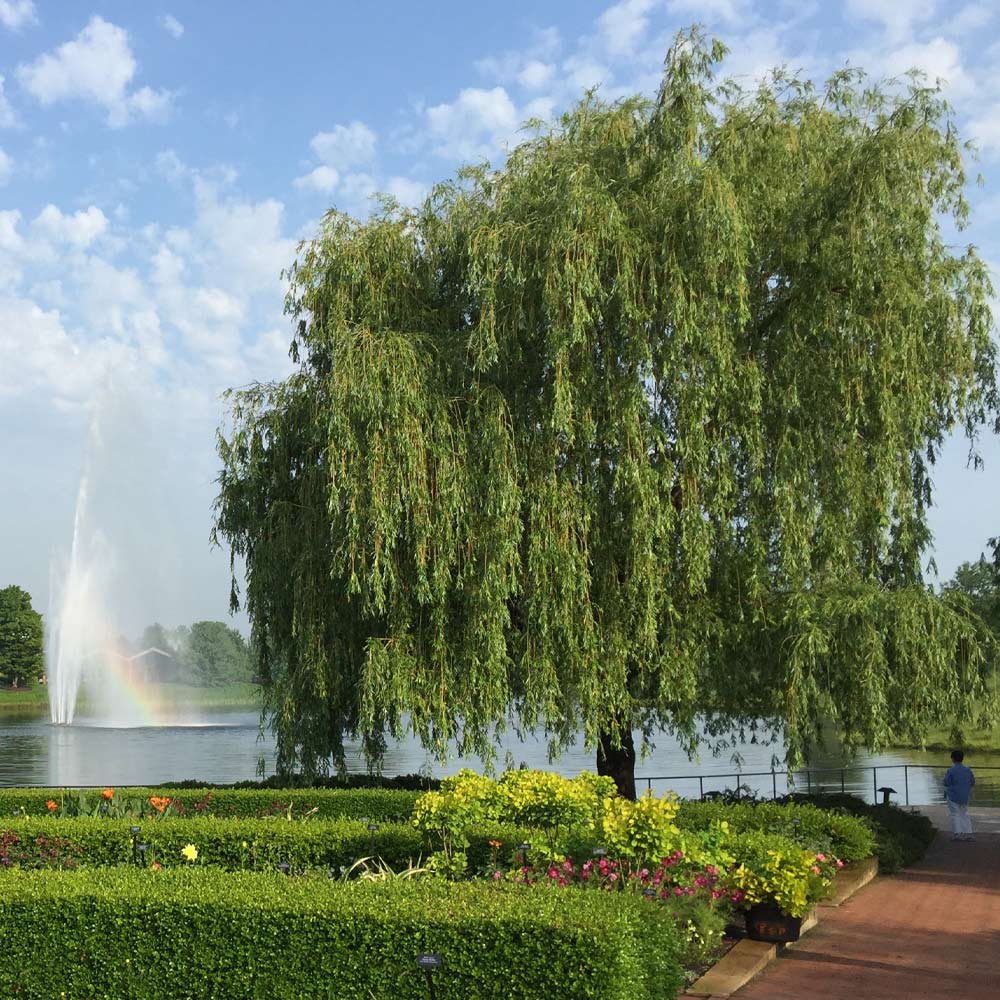Table of Contents
Don’t you think planting willow trees in your yard is a good idea? Well, Yes! Because the unique branches and leaves make it a perfect choice for anyone who is planning to add some more refreshments to the yard. Their long, slender, and drooping branches attract a garden lover, to begin with planting it. Along with that, the foliage comes in chalk green, bright green, pink, yellow-green, silvery, golden, and bronzy shades. They are also known as sallow and osiers.
From small to medium-sized, you can come across different varieties of it. Usually, it grows over 15m, but there are also some species too that are small and ideal for your yard. Being a moisture-loving plant, they can easily thrive in wet areas, whereas some other species grow well in dry conditions as well.
However there are about 400 species of willow trees, but in this blog, we will cover only the top 12 willow trees that are perfect for landscaping.
Let’s discover the most interesting types of willow trees!
Willow Tree Varieties for Your Landscape
Willow trees, being part of a larger genus of deciduous shrubs called Salicaceae, when planted, give a pleasing appeal to the whole garden. So, if you are thinking of incorporating a willow tree into your yard, then these are the 12 most common varieties listed below.
1. Goat Willow
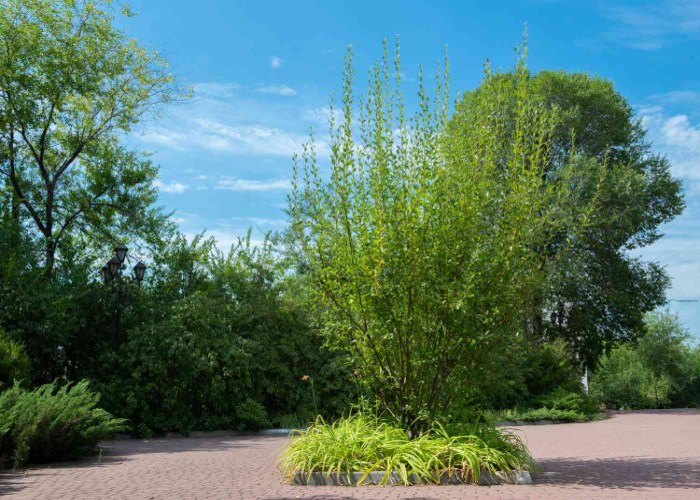
The Goat willow is also referred to as Pussy Willow because of its male parts resembling cat paws. With a lifespan of 300 years, the mature trees reach up to 10m. The leaves of goat willow are ovate, with fine greyish hairs below. It bears woolly, grey-green fruits which contain tiny seeds in it.
|
Botanical Name |
Salix Caprea |
|
Regions |
Southern Norway to Eastern Spain |
|
Size |
26 to 33 feet tall |
|
Type |
Deciduous |
|
Soil Requirements |
Grows well in sandy, loamy, and clay soil |
|
Sun Exposure |
Full Sun |
2. Weeping Willow
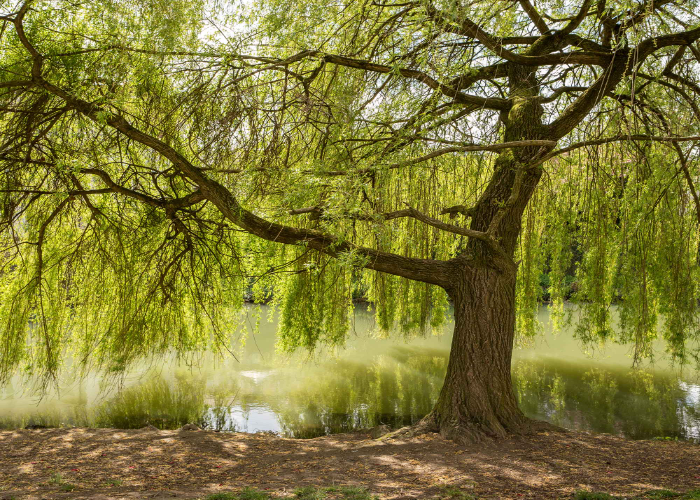
The Weeping Willow is the most common species found in the US. With a short lifespan of 40-75 years, it grows up to a height of 80 feet. It is a medium-sized tree whose leaves are spiraled and turn yellow when it falls. It blooms beautiful flowers in Spring and bears fruits that are green or brown coloured like capsules.
|
Botanical Name |
Salix Babylonica |
|
Regions |
Northern China |
|
Size |
30 to 50 feet |
|
Type |
Deciduous |
|
Soil Requirements |
Thrives well in moist soil |
|
Sun Exposure |
Full Sun |
3. Peachleaf Willow
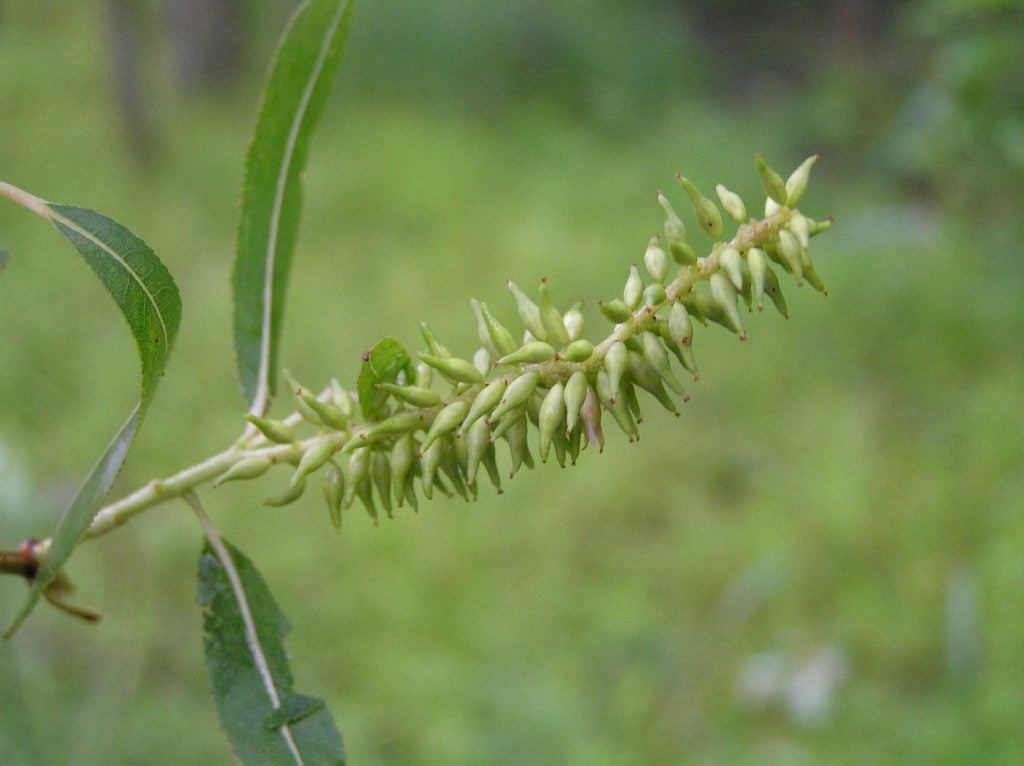
Peachleaf Willow is just like its name. The leaves of these trees are pointed and are a perfect addition to large gardens or any parks. It has large, oval-shaped foliage. It blooms in early Spring. However, it is one of the large among other willows that grow quickly but does carry a long lifespan. So plant it accordingly.
|
Botanical Name |
Salix amygdaloides |
|
Regions |
Central North America |
|
Size |
13 to 66 feet |
|
Type |
Deciduous |
|
Soil Requirements |
Grows in damp or wet soil |
|
Sun Exposure |
Full Sun to Part Shade |
4. Arctic Willow
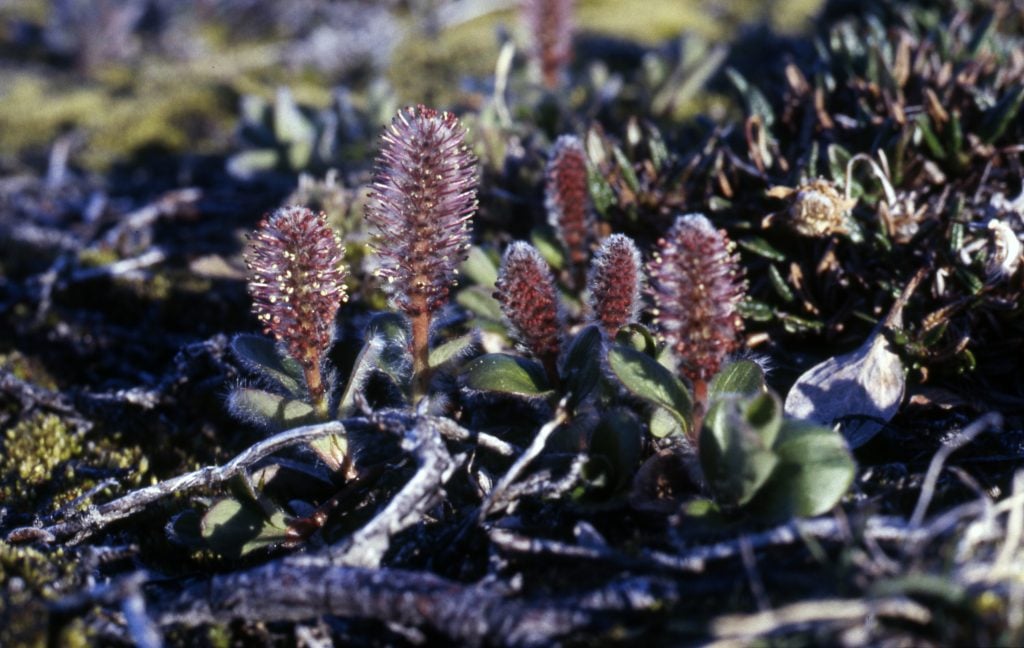
Arctic Willow is one of the shortest shrubs that you can plant in your garden. It is an excellent option for rock gardens, where it will not grow more than its actual height among the stones. It has beautiful glossy leaves. Being the most attractive carpeting plant, you must opt for it. It blooms fully in Spring with purplish red catkins.
|
Botanical Name |
Salix arctica |
|
Regions |
North America |
|
Size |
Up to 20 feet tall |
|
Type |
Deciduous |
|
Soil Requirements |
Moist, Well-drained soil |
|
Sun Exposure |
Full sun to partial shade |
5. Japanese Pussy Willow
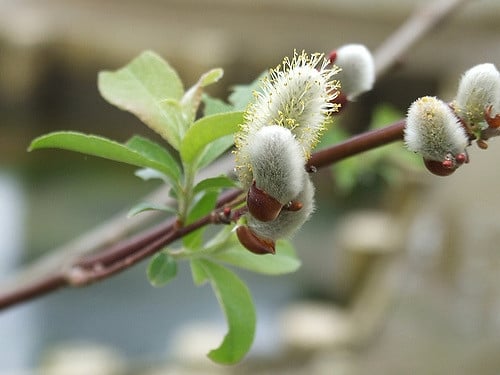
With large and vibrant foliage, the Japanese Pussy Willow is another elegant addition to any garden. Its young branches appear with a tender multitude of leaves. The flower blooms in Spring and fills the whole tree with purple plumes. Its a completely natural beauty which is priceless to your yard. Its an obvious choice for any garden.
|
Botanical Name |
Salix Chaenomeloides |
|
Regions |
North & Eastern China |
|
Size |
Up to 8 feet tall |
|
Type |
Deciduous |
|
Soil Requirements |
Moist, Well-drained soil |
|
Sun Exposure |
Full sun |
6. Dwarf Blue Arctic Willow
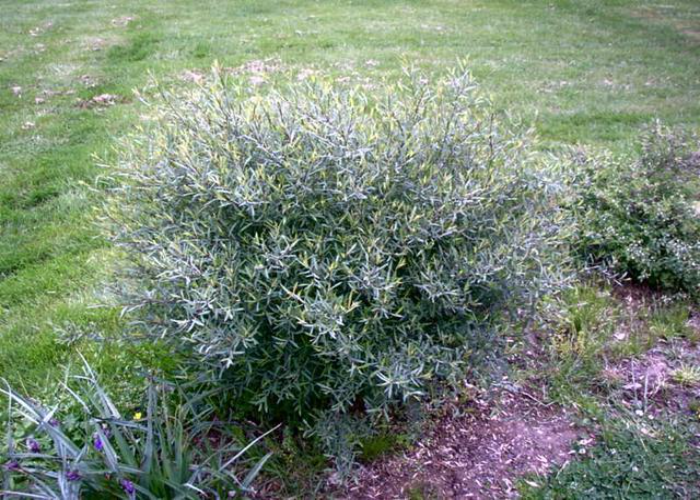
For wet areas and full sun, Dwarf Blue Willow is a great shrub. It grows fast and is hardy. There are blue-green linear leaves and purple stems on the plant. However, the plant tolerates a wide range of soil conditions, but it does like to dry out soon. If you have a pond near your home, then you can easily plant it. Last but not least, butterflies and caterpillars feed on willow trees well.
|
Botanical Name |
Salix Purpurea “Nana” |
|
Regions |
North Africa, Central Asia |
|
Size |
Up to 4feet tall |
|
Type |
Deciduous |
|
Soil Requirements |
Grows well in wet areas |
|
Sun Exposure |
Full sun |
7. Brittle Willow
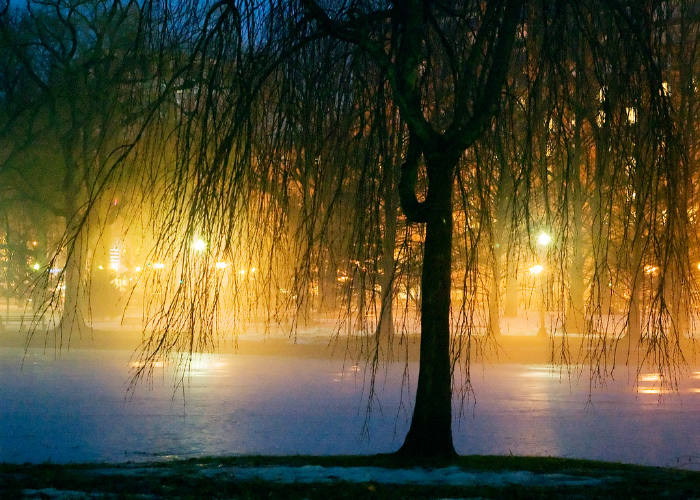
Brittle Willow is one of the fastest-growing willow trees. This is why most gardeners prefer planting it as it appears in just a few years. The foliage of brittle willow is spherical and crown-shaped. The leaves are bright green in color and are pointed. But because of their heavy weight, they tend to crack and split. Moreover, it is best suited for weaving purposes.
|
Botanical Name |
Salix Fragilis |
|
Regions |
Europe & Western Asia |
|
Size |
33 – 66 feet Tall |
|
Type |
Deciduous |
|
Soil Requirements |
sandy and sandy loam soil |
|
Sun Exposure |
Full sun |
8. Coyote Willow
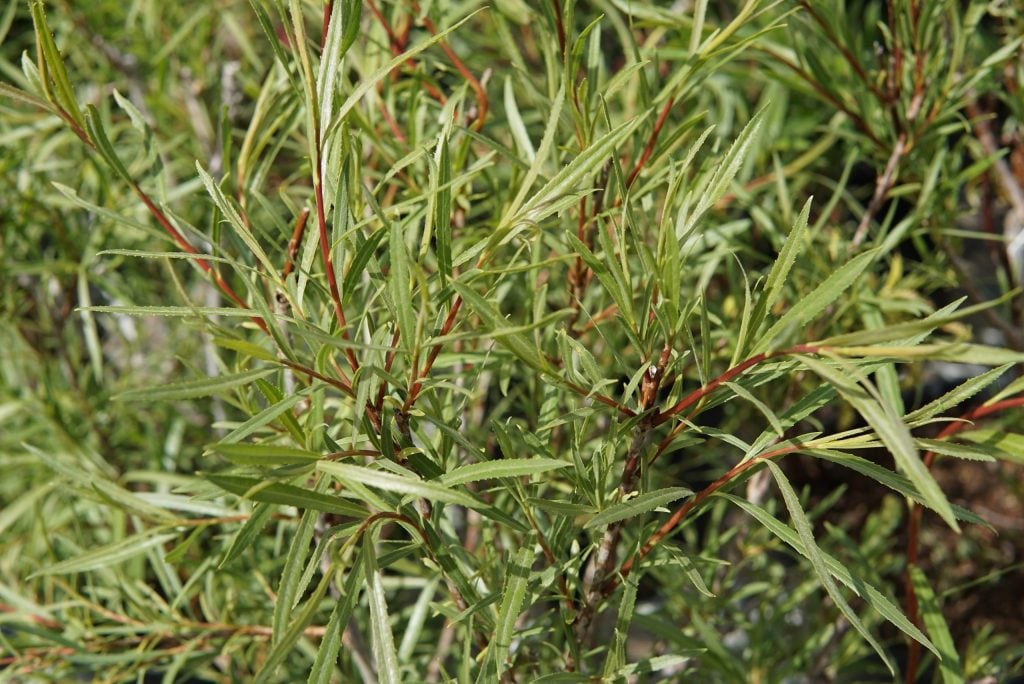
Coyote Willow is truly beautiful. It is gentle, rebellious, and a gentle shrub to plant in your garden. However, it is perfect for modern as well as traditional gardens. When the shrub is young, it forms a small bush. But when it matures, it appears with large beautiful oval-shaped foliage. Ultimately, you can say it is an ideal option for eco-friendly garden design.
|
Botanical Name |
Salix exigua |
|
Regions |
North America |
|
Size |
13 – 30 feet Tall |
|
Type |
Deciduous |
|
Soil Requirements |
Clay, loamy, & sandy soil |
|
Sun Exposure |
Full sun to part shade |
9. Dappled Willow
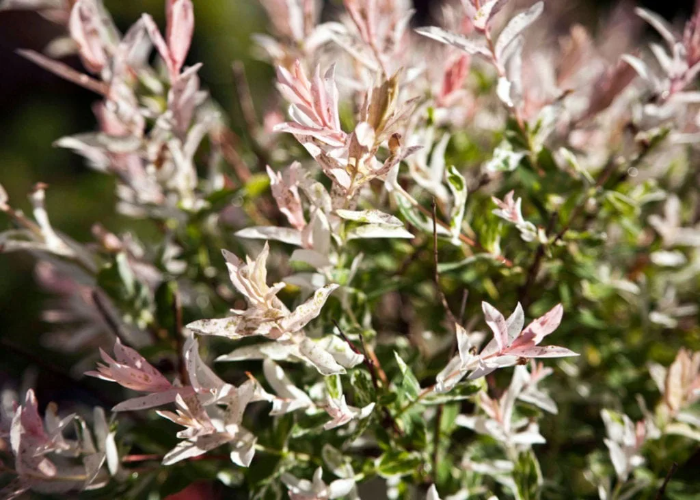
Dappled Willow is one of the unique tiny species among all willow varieties. Being a low-maintenance shrub, anyone can easily add it to their yard. It appears with colorful white and pink leaves, which serves as a perfect eye-pleasing view. However, its rapid growth rate makes it stand out as a landscaping tree.
|
Botanical Name |
Salix Integra ‘Hakuro Nishiki’ |
|
Regions |
China, Japan, Southeast Russia |
|
Size |
8-10 feet Tall |
|
Type |
Deciduous |
|
Soil Requirements |
Moist but well-drained soil |
|
Sun Exposure |
Full sun or partial shade |
10. Corkscrew Willow
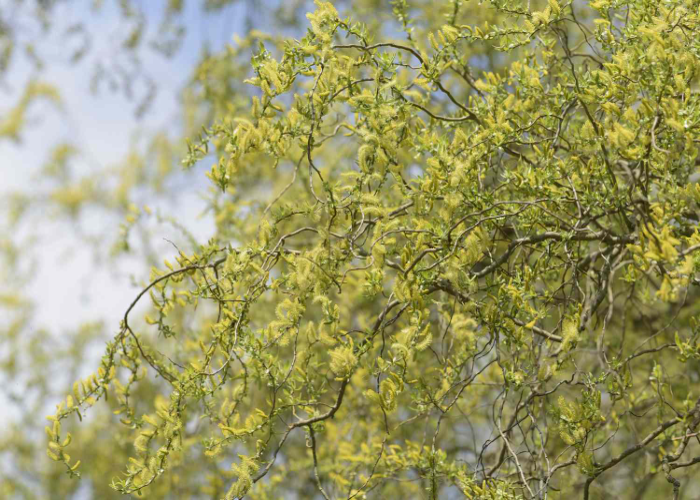
The Corkscrew Willow is another beautiful addition to the tree species. Having contorted branches, it gives a remarkable look to your garden. The leaves are pinnate and are quite simple with serrated margins. It gives flowers during Spring and appears with tiny brown capsule-shaped fruits.
|
Botanical Name |
Salix matsudana |
|
Regions |
China, Korea, Japan |
|
Size |
up to 30 feet tall |
|
Type |
Deciduous |
|
Soil Requirements |
Moist soil – clay, loamy, sandy soil |
|
Sun Exposure |
Full sun |
11. Yellow Willow
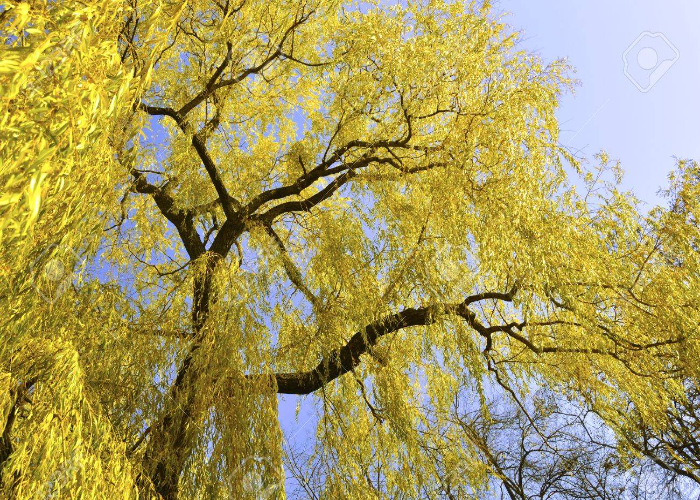
Yellow Willow is an ultimate addition to any yard. And the best part is that it attracts butterflies well. It has flat structured leaves with a round base and fine serrations on the margins. The fruits of these trees look like cone-shaped capsules. However, to reproduce it easily, you can use both the seeds and cuttings.
|
Botanical Name |
Salix lutea |
|
Regions |
North America, Central Canada, Parts of Western & Central US |
|
Size |
Up to 22 feet tall |
|
Type |
Deciduous |
|
Soil Requirements |
Moist & Wet soil |
|
Sun Exposure |
Full sun |
12. White Willow
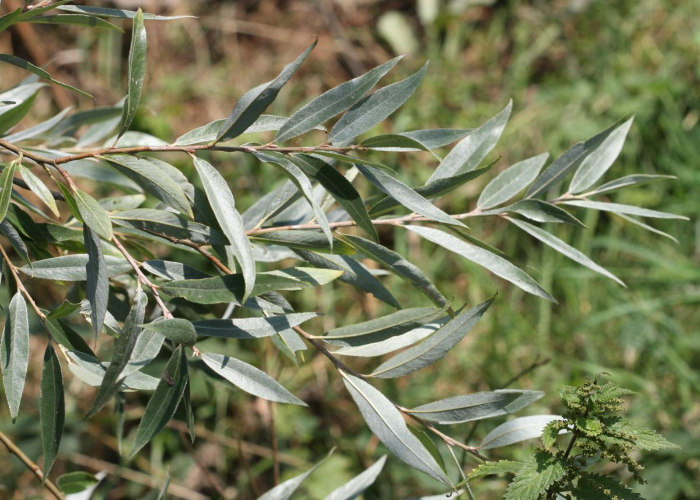
The White Willow is one of the fastest-growing willows among all the species. It has long, thin leaves with leathery undersides and serrated white margins. The white willow tree contains numerous tiny seeds and bears fruit in the shape of a capsule with two halves. However, it is used to make aspirin and other pharmaceutical products as well.
|
Botanical Name |
Salix Alba |
|
Regions |
Asia, Africa, Europe |
|
Size |
80 feet |
|
Type |
Deciduous |
|
Soil Requirements |
Thrives in damp soil |
|
Sun Exposure |
Full sun to part shade |
Benefits of Growing Willow Trees
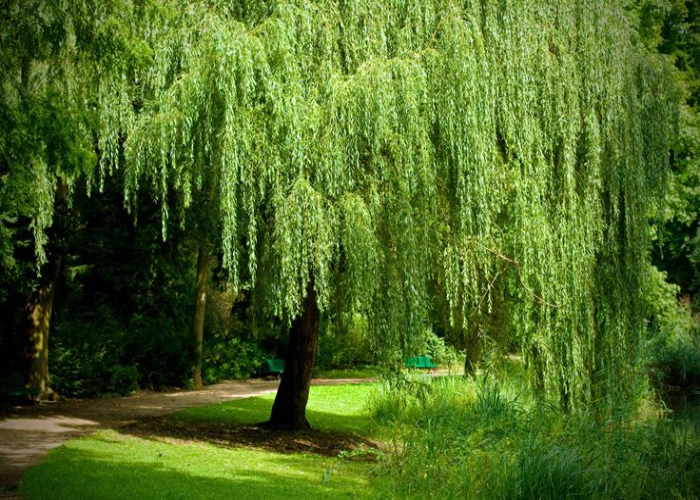
There are various benefits of planting willow trees, but a few of the points are listed below:
- Once it is fully grown, it gets you a shady spot to enjoy your free time.
- These are used for weaving purposes and making fish traps.
- It helps to combat erosion, so you should definitely plant this.
- Its a large source of natural aspirin as it contains anti-inflammatory substances.
Summing It Up
All in all, willow trees are beautiful shrub that has made history in any garden. In this article, we have mentioned 12 willow tree varieties to help you choose from while planting it. Its eclectic presence enhances the overall appearance of the garden. Along with the various medicinal uses, it serves as the best option for regular requirements as well, like weaving baskets and many more. Hopefully, this article had relevant information to help you get started if you are new to gardening willow trees.
So, what are you waiting for? Start your gardening journey with these beautiful willow varieties now!
Frequently Asked Questions
Where Are Willow Trees Found?
It is most commonly found in the regions of Canada, Georgia, and the United States. Basically, willow trees originate from China, but they can be found throughout the Northern Hemisphere, i.e., Europe, Asia, and North America.
When to Prune Willow Trees?
Willow trees should be pruned during their dormant season. But if you prune it earlier, like when it is actively growing, then it bleeds sap. So it is always advisable to look after the pruning period more precisely.

